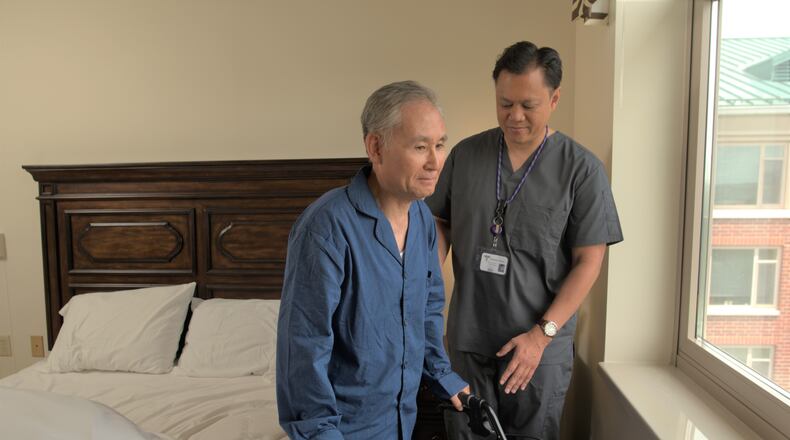Additionally, the number of specialists, such as geriatricians and neurologists, will have to grow by almost 230% by 2050 to keep up with the aging population.
“Ohio’s population is aging. According to the Ohio Department of Aging, Ohio has 2.5 million residents over the age of 60, and our 60-plus population is growing more than 20 times faster than our overall population,” said Annemarie Barnett, executive director of the Alzheimer’s Association Miami Valley and Greater Cincinnati Chapters. “As the older population expands, so too will the numbers of those living with dementia.”
Ohio has a higher rate of mortality than the national average when it comes to deaths related to Alzheimer’s disease. The death rate in Ohio is 44.8 deaths per 100,000 individuals, while the national average is 37 deaths per 100,000 individuals, according to the Alzheimer’s Association.
Hundreds of people in Ohio are also estimated to be working hundreds of hours of unpaid labor. The Alzheimer’s Association estimated that unpaid labor was worth over $13 billion in Ohio in 2022 and over $339 billion in the U.S. Unpaid caregivers of people with Alzheimer’s or other dementias provided care valued at more than $5 billion 23 states, the association said.
In Ohio, there were only 163 geriatricians in 2021, and the Alzheimer’s Association said that number will need to increase to 537 by 2050 in order to meet care demands for 10% of the of the projected number of Ohioans age 65 and older with Alzheimer’s.
More needs to be done to build up the direct care workforce, Barnett said. If the industry is not able to get more workers, she said those that need it will not get the proper care as it takes 2.5 people to care for one Alzheimer’s patient.
“The report sounds an important alarm on the urgent need to attract and retain these essential front-line care workers,” said Barnett. “These valuable professionals are not only providing direct care to people living with Alzheimer’s and other dementia, but they are vital in supporting family caregivers, particularly for those who care for their loved ones at home.”
Adults seeking specialized care for dementia are also already feeling the lack of resources.
“People are already on waiting lists,” Barnett said. “That’s just going to get worse.”
Early diagnosis is also important when it comes to treating dementia. Drugs like Leqembi, also called lecanemab, need to used early in a diagnosis, though the drug is costly and only covered by Medicare through clinical trials.
“The treatments that we have out there right now are for people in the mild cognitive impairment, the early stages of this disease, and diagnosis is vital for them to be able to use these new treatments,” Barnett said.
The Area Agency on Aging said the shortage of home health workers has also be a large concern for them. The big reason deterring workers from going to or staying the field of home health care or other direct support roles is due to the wages, said Doug McGarry, executive director of the Area Agency on Aging’s local service region.
“It’s hard work. People need transportation to get to and from people’s homes,” McGarry said.
The pay for a home health worker is approximately $12 an hour, he said, and they are competing with fast food chains that pay better.
Growth in the older population is between 20-30%, he said, and more adults want to age at home instead of moving to a nursing home.
“With increased age, comes increased disability, and that’s where that demand is coming from,” McGarry said.
The Area Agency on Aging is working with legislators to increase the pay for workers set by Ohio Medicaid. Governor Mike DeWine’s budget proposal recommended raising those wages to $16 an hour. The Area Agency on Aging is advocating for direct care workers to receive $20 an hour.
“This is the time for people to talk to their legislators about how important home care and the important work that the home care workers do,” McGarry said.
About the Author

